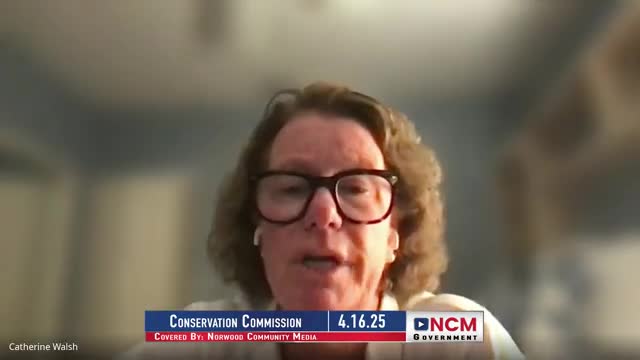Wetlands debate highlights frog population near Quail Run
April 22, 2025 | Town of Norwood, Norfolk County, Massachusetts
This article was created by AI summarizing key points discussed. AI makes mistakes, so for full details and context, please refer to the video of the full meeting. Please report any errors so we can fix them. Report an error »

In a recent meeting of the Norwood Conservation Commission, community members gathered to discuss the health of local wetlands and the wildlife that inhabits them. The atmosphere was charged with a mix of concern and curiosity as residents shared their observations about the natural environment surrounding their homes.
Michael Rohwer, a resident of Quail Run, spoke passionately about the wetlands adjacent to his backyard. He noted that while the area typically dries out each summer, he has recently been delighted by the chorus of frogs that have returned to the wetlands. “There are frogs back there, that much I know,” he stated, emphasizing the importance of these creatures in the local ecosystem.
The conversation quickly turned to the expertise of the wetland scientists involved in the ongoing discussions. One commission member praised the work of the scientists, expressing confidence in their assessments and the collaborative nature of the review process. “We’re not in disagreement with anything that your peer reviewer concluded here,” he remarked, highlighting a sense of unity among the experts and the commission.
As the meeting progressed, questions arose regarding the specific types of frogs being heard in the area. A commission member sought clarification on the distinct calls of different frog species, indicating a deeper interest in understanding the biodiversity present in the wetlands. Rohwer described the sounds as high-pitched, reminiscent of crickets, which sparked further discussion about the implications of these findings for the local environment.
Another resident, Charice Roar, expressed her appreciation for the thoroughness of the commission's approach, particularly in bringing in expert opinions to address community concerns. She inquired about potential issues that might arise in future stages of project approval, indicating a proactive stance on ensuring the health of the wetlands.
The meeting underscored the community's commitment to preserving their natural surroundings while navigating the complexities of development and conservation. As discussions continue, residents remain engaged, eager to protect the delicate balance of their local ecosystems. The commission's efforts to involve community voices and expert insights reflect a collaborative approach to conservation that could serve as a model for other towns facing similar challenges.
Michael Rohwer, a resident of Quail Run, spoke passionately about the wetlands adjacent to his backyard. He noted that while the area typically dries out each summer, he has recently been delighted by the chorus of frogs that have returned to the wetlands. “There are frogs back there, that much I know,” he stated, emphasizing the importance of these creatures in the local ecosystem.
The conversation quickly turned to the expertise of the wetland scientists involved in the ongoing discussions. One commission member praised the work of the scientists, expressing confidence in their assessments and the collaborative nature of the review process. “We’re not in disagreement with anything that your peer reviewer concluded here,” he remarked, highlighting a sense of unity among the experts and the commission.
As the meeting progressed, questions arose regarding the specific types of frogs being heard in the area. A commission member sought clarification on the distinct calls of different frog species, indicating a deeper interest in understanding the biodiversity present in the wetlands. Rohwer described the sounds as high-pitched, reminiscent of crickets, which sparked further discussion about the implications of these findings for the local environment.
Another resident, Charice Roar, expressed her appreciation for the thoroughness of the commission's approach, particularly in bringing in expert opinions to address community concerns. She inquired about potential issues that might arise in future stages of project approval, indicating a proactive stance on ensuring the health of the wetlands.
The meeting underscored the community's commitment to preserving their natural surroundings while navigating the complexities of development and conservation. As discussions continue, residents remain engaged, eager to protect the delicate balance of their local ecosystems. The commission's efforts to involve community voices and expert insights reflect a collaborative approach to conservation that could serve as a model for other towns facing similar challenges.
View full meeting
This article is based on a recent meeting—watch the full video and explore the complete transcript for deeper insights into the discussion.
View full meeting
